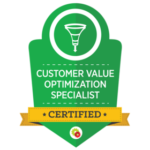7 Email Marketing Metrics that Matter
Gone are the days where being a “safe” sender was enough to save your message from landing in the spam folder. Now mailbox providers rate each sender on a number of criteria to determine whether your message lands in a potential customer’s inbox — or in the spam folder. They have increasingly sophisticated ways to limit marketing messages from landing in inboxes.
Many of the metrics we will discuss here are not reportable to most marketing automation systems. However, it is is important to understand how your sending domain is ranked and analyzed by the recipient and that is the point of this information.
Here are 7 email marketing metrics you need to pay attention to according to a report from RP Metrics.

- Deleted before reading rate: This is the rate at which receivers trash your message without opening it. These people are not interested in your message for whatever reason. Using interesting subject lines and reaching a demographic that lines up well with your business is key to keeping this rate low. Social and dating sites tend to do poorly in this category, whereas office supplies and flowers/gifts do well.
- Read rate: This simply measures the rate at which people read the messages you send. It’s the easiest way to measure how engaged recipients are. If they’re not reading your messages, you may need to tinker with the timing or how the subject line is phrased. Industries with customer accounts such as banking typically have a high rate over 30 percent whereas other sectors like media marketing and nonprofits have rates below 20 percent.
- Reply rate: When recipients reply to a message, that’s a good sign that the sender is another person and not a spam bot. However, for businesses, a high reply rate might mean more people are unsubscribing from your list. There’s no goal to hit for this, but having an inbox that isn’t called “noreply” is a good start.
- Spam replacement rate: This is the number of emails sent that end up in spam folders as a percentage of all emails sent. Certain content triggers (like having too many images) could mean your message lands in a spam folder. Banking and finance have excellent replacement rates compared to automotive, education, nonprofit, and government, which have some of the lowest rates.
- Complaint rate: Even if your message reaches a recipient, they still may mark it as spam. Although these rates are typically under 0.5%, it’s still important to notice how often people are actively marking your messages as spam.
- Forward rate: This is how often recipients pass your message on to other users. Having a high forward rate is a good thing, but is difficult to obtain. Utilities and telecommunications—businesses that issue invoices that need to be shared with others—had the highest rates in this category.
- Not marked as spam rate: This counts the number of times a recipient specifically marks your message as “not spam.” For that to happen, the message has to initially land in the spam folder. Therefore, a low rate may not be a bad thing—your messages may just initially be going to inboxes. However, some industries—like education and health & beauty—saw a positive change in this category over the last year.
The bottom line is that email marketing is becoming more sophisticated. Companies need to develop flexible strategies and respond to customer feedback faster than ever before. By keeping track of critical metrics and adjusting their messages, digital marketers can better engage customers and keep out of the dreaded spam folder. Especially if you regularly clean your data, only use an opt-in list and most importantly only send content that nurtures, educates and is expected by the recipient.
Copyright 2017 Viral Solutions

Queen of the Machine for Viral Solutions LLC

“If a brand genuinely wants to make a social contribution, it should start with who they are, not what they do. For only when a brand has defined itself and its core values can it identify causes or social responsibility initiatives that are in alignment with its authentic brand story.” ~ Simon Mainwaring


